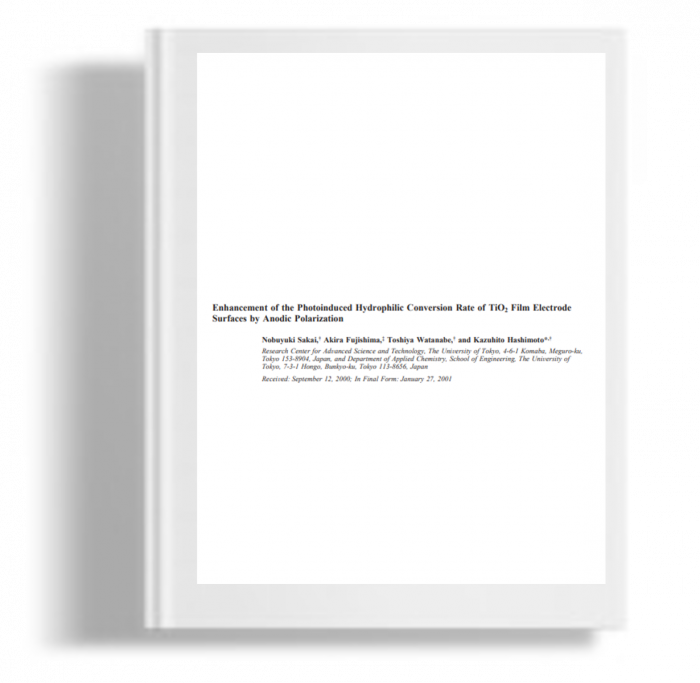Kami menggunakan cookies untuk membuat pengalaman Anda lebih baik. Untuk mematuhi petunjuk e-Pribadi yang baru, kami perlu meminta persetujuan Anda untuk menyetel cookies. Pelajari lebih lanjut .
Enhancement of the protoinduced hydrophilic conversion rate if TiO2 film electrode Surfaces by Anodic Polarization
Changes in hydrophilicity of TiO2 film electrode surfaces by UV light irradiation in an aqueous solution were investigated under potential-controlled conditions. Although no change was observed when the electrode potential of TiO2 was set around its flat-band potential Efb, the photoinduced hydrophilic conversion proceeded at potentials positive of Efb. The hydrophilic conversion rate increased with larger positive potentials, but the addition of hole scavengers decreased the rate, suggesting that the diffusion of photogenerated holes to the surface is the important process for the hydrophilic conversion. Based on these results, we propose a model in which the photoinduced hydrophilicity is initiated by two-hole trapping by a surface lattice oxygen, producing an oxygen defect, followed by the dissociative adsorption of a water molecule at the defect site.
Changes in hydrophilicity of TiO2 film electrode surfaces by UV light irradiation in an aqueous solution were investigated under potential-controlled conditions. Although no change was observed when the electrode potential of TiO2 was set around its flat-band potential Efb, the photoinduced hydrophilic conversion proceeded at potentials positive of Efb. The hydrophilic conversion rate increased with larger positive potentials, but the addition of hole scavengers decreased the rate, suggesting that the diffusion of photogenerated holes to the surface is the important process for the hydrophilic conversion. Based on these results, we propose a model in which the photoinduced hydrophilicity is initiated by two-hole trapping by a surface lattice oxygen, producing an oxygen defect, followed by the dissociative adsorption of a water molecule at the defect site.

